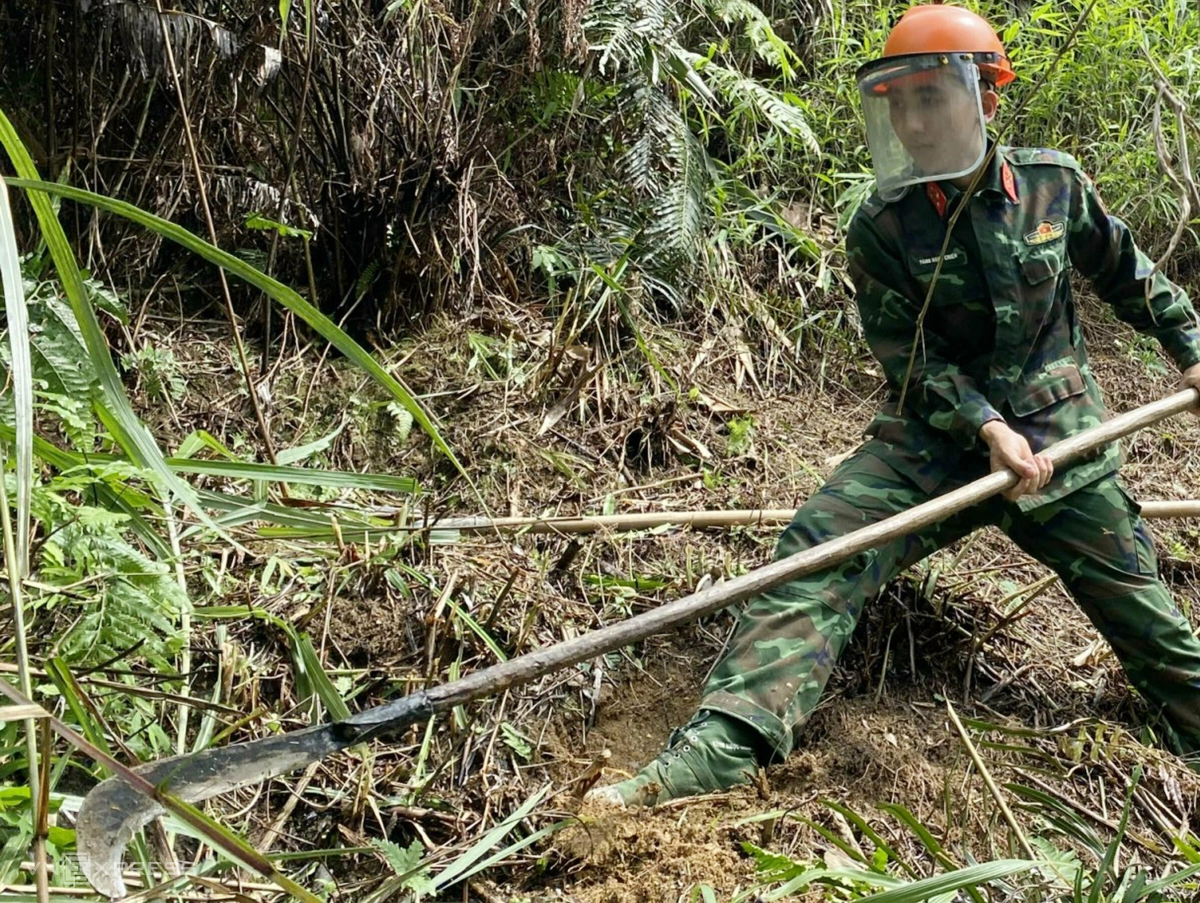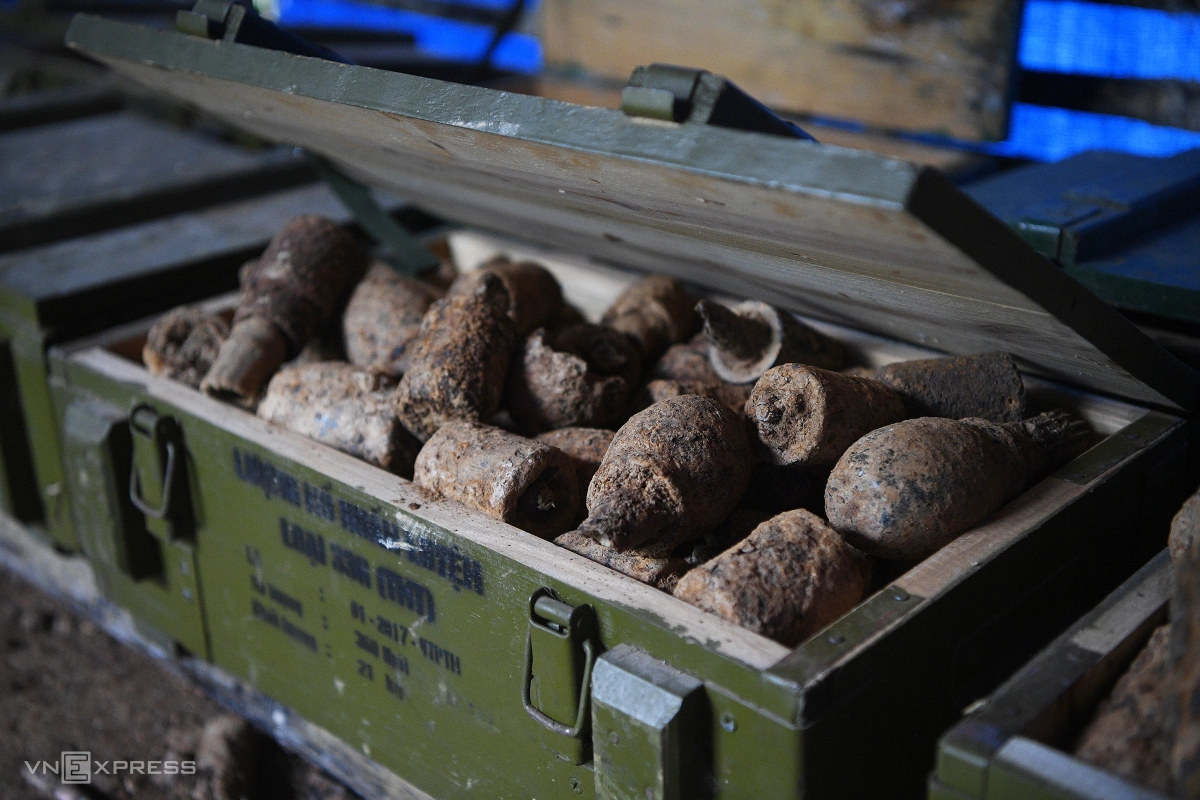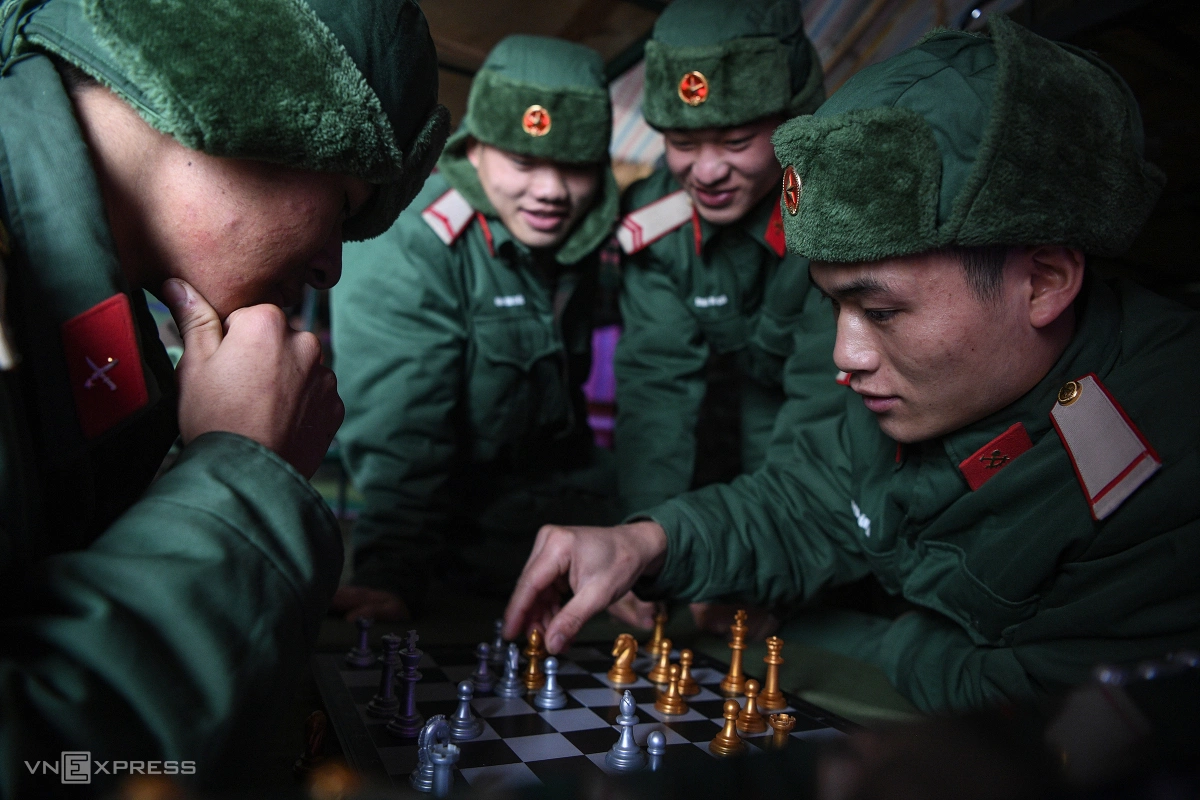A soldier walks near the explosive storage area of Engineering Unit 19 under the Ha Giang Military Command, which is marked with a red sign that says "danger - no entry."
The unit is located in Ma Hoang Phin Village of Minh Tan Commune in Vi Xuyen District of Ha Giang Province. About 60% of the explosives, still capable of causing harm, have been safely processed, awaiting destruction orders from the authorities.
Nearly four decades after the conflict along the Vietnam-China border concluded, Ha Giang remains plagued by 77,900 hectares of land contaminated with bombs and mines within its border districts.
Vi Xuyen is particularly afflicted, harboring up to 7,500 hectares of this hazardous terrain.
Military units are prioritizing the clearance of approximately 1,500 hectares with dual objectives: to retrieve the remains of soldiers who fell in battle and to rehabilitate the land for agricultural use.
"Both sides planted a vast and diverse array of explosives at high points and strategic locations, without the aid of detailed maps. Consequently, the task of retrieving the remains of martyrs necessitates tight coordination with the engineering troops' demining operations to guarantee safety," said Colonel Le Anh Tuan, Deputy Commander of the Ha Giang Military Command.
As one of the six units participating in demining, the Ha Giang Military Command is responsible for clearing 150 hectares of land in Minh Tan Commune.
The Sino-Vietnamese War, also known as the Third Indochina War, was a brief border conflict between China and Vietnam in 1979.
The war officially began on Feb. 17, 1979, when Chinese forces crossed into Vietnam across the northern border. The Chinese People's Liberation Army (PLA) mobilized hundreds of thousands of soldiers for the invasion. The conflict was concentrated in the northern provinces of Vietnam, with significant battles occurring in areas such as Lang Son, Cao Bang, and Ha Giang. The terrain was mountainous and difficult, posing challenges for both sides.
The terrain for demining is mainly high mountains and deep valleys along the border. Before clearing the ground, soldiers check for trip wires and mine traps before manually clearing the area with knives, shovels, and iron rods to create safe entryways and corridors to demining locations.
The Sino-Vietnamese War had a lasting impact on the Vietnamese people, particularly in the northern provinces, where landmines and unexploded ordnance from the war still pose a danger to civilians. Efforts to clear these remnants of war and recover the remains of soldiers who died in the conflict continue to this day.
Private San Van Trung, part of the team for mine clearing, shows calloused hands from eight months of work. Trung mentions that when using a machete or saw, one must always cut horizontally or parallel to the ground, avoiding straight downward motions that could hit a mine cover.
Upon detecting explosive signs, the engineers mark the spot with a red flag and only proceed with further searches after the area has been cleared. Trained officers are always in charge of neutralizing explosives. Colonel Tuan said that personnel tasked with this are carefully selected and thoroughly trained, following strict safety rules.
Engineers are prohibited from carrying magnetic items like phones, watches, or keys that could interfere with detection equipment and are not allowed to skip any approved demining procedures.
After processing, explosives are gathered at the unit's storage.
Commonly encountered mines include types 652A, 652B, MN79, K58, K-69, PPM2, with the most common being the 652A.
Produced by China, it is small and green, and blends with the forest leaves, making it hard to detect. A pressure of about 5-7 kg is enough to trigger those mines, causing explosions that can injure people within a one-meter radius.
About 500 meters from the explosive storage is the camp of Engineering Unit 19, made of bamboo and covered with palm leaves and tarps, housing around 100 soldiers on duty.
During their free time, soldiers organize their tools, including shovels, iron rods, and machetes.
After each storm, heavy rain or a long pause in work, the unit must check the conditions of the tools before resuming.
By the end of January, the north experienced severe cold spells, with temperatures in the mountains dropping to 1-2 degrees Celsius, confining soldiers to their camps for days.
To entertain themselves, conscripted soldiers play chess or do push-ups.
San Van Trung takes a large mirror to the middle of the yard to cut his comrades' hair.
Due to the mission, the engineers' camp is far from residential areas, and the soldiers' living and working space is confined from the camp to the demining fields.
With the mission lasting two years and the camp staying nearly 50 km from the center of Minh Tan Commune, soldiers grow vegetables and raise chickens to supply food for themselves.
The war did not end on Mar. 5, 1979, as declared by China.
In reality, fierce conflicts continued for years after that, with numerous incursions along the border.
Ha Giang, with a border of 277 km, became a "training ground for military exercises, tactical training, and weapon testing" by China, especially between 1984-1989, Lieutenant General Dang Quan Thuy, former commander of the Vi Xuyen front.
In Vi Xuyen alone, about 2 million Chinese artillery shells were fired onto the district, with thousands of fierce battles over six years.
To protect the district, about 4,000 soldiers sacrificed their lives, and thousands were injured, according to the Veterans Association of this front. To this day, the remains of nearly half of those martyrs have yet to be found.

















